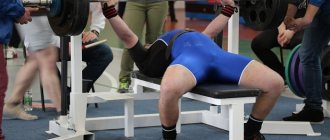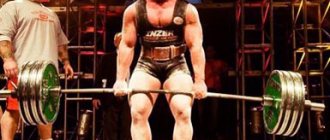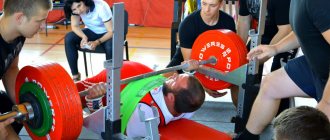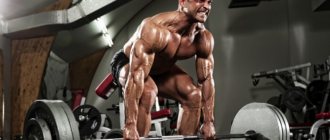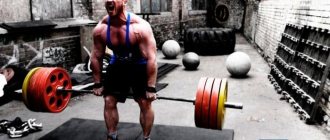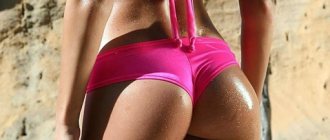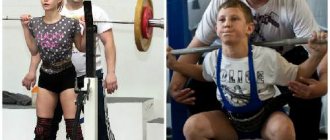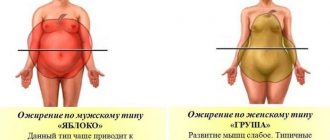Equipment in powerlifting is what fundamentally distinguishes powerlifting from other sports, giving it something mysterious and incomprehensible to ordinary people. Equipment is armor, a means of protection and an assistant in achieving your goals. You feel like a medieval knight, dressed in armor, your joints and muscles are tightly compressed, you experience discomfort, sometimes even pain. But all this gives a feeling of security, self-confidence and allows you to lift huge, inhuman weights.
Equipment
Equipment is clothing, shoes, belts, elastic bandages and other devices used when lifting the barbell, approved by powerlifting federations for use in competitions. Powerlifting equipment is designed to minimize injury during exercise.
First of all, the equipment protects the powerlifter from sprains and muscle tears, injuries to the spine, knees and wrists. Regular sports uniforms or shorts, although allowed for competitions, cannot help in any way in case of injury, and therefore are not considered equipment.
Know your federations!
The organizations that sponsor powerlifting competitions are called federations, and each has its own unique set of rules and regulations regarding acceptable equipment. Some federations are very scrupulous in this matter, and even indicate the brands of knee pads, belts, wrist bandages and other equipment that athletes are allowed to use.
If you see your future in competitive powerlifting, carefully monitor the schedule of competitions you would like to compete in and consider the equipment and brands allowed at each event. Do everything so that it doesn’t turn out that you spend thousands of rubles on equipment, train with it, and then arrive at the competition and find out that you won’t be able to use it.
Main differences between the equipment
The equipment gives a powerful breakdown, that is, it helps at the bottom and slightly at the middle point of the movement. The athlete must complete the upper final phase himself. From this follows the specificity of equipment technology. The main task of the athlete is to learn how to use this breakdown to the greatest benefit. So we come to the main difference between equipped and unequipped exercises.
This may seem surprising, but when using equipment, the main thing is not to press, stand up and pull, but to lower, sit and sit down, that is, it is the negative part of the movement that is important, it will determine your skill and the weight that you can handle.
In equipment powerlifting, the correct “pressure”, lowering the barbell to the chest and “planting” it to the bar in the deadlift is an almost one hundred percent guarantee that the weight will be lifted. How does it work? Properly selected equipment “breaks” the movement: on the squat it makes your knees collapse, on the bench press it makes you throw the barbell on your head, stomach, anywhere but on your chest, on the deadlift it makes your back hunch.
The athlete’s task is to resist the equipment and perform the movement correctly, not to allow the equipment to control the barbell. After all, only with an ideally correctly executed negative phase of movement does the equipment work at its maximum. Otherwise, it only gets in the way.
But let's tell you a secret - in fact, equipment is needed so that you can lift incredible weights so that people will admire your strength. And the most common question from beginners: how much can equipment increase your results?
How much can powerlifting equipment give?
The total gain from equipment in powerlifting varies from 30 kg to 300 kg - depending on the skill and strength of the athlete. It is not difficult to calculate the increase that equipment gives as a percentage of the maximum without equipment. On the squat it is 80%, on the bench press - 70%, on the deadlift 20%. And this is far from the limit.
We can say with a guarantee that a person who assembles a KMS without equipment, having correctly selected and learned to use it, will assemble a master! But this does not mean that by purchasing and putting on powerlifting equipment, you will immediately be able to put on 50-100 kilograms.
Working with equipment has its own specifics and requires certain techniques. This is long, hard and painstaking work, which ultimately determines the champions and masters of their craft on the platform.
The equipment gives a powerful breakdown, that is, it helps at the bottom and slightly at the middle point of the movement. The athlete must complete the upper final phase himself. In addition to technique, the amount of increase from equipment depends on the strength of your half-movements - half-squat, push-up (bar press), deadlift. Situations have happened more than once when a person who benches a lot without a shirt and has never done push-ups lost in a T-shirt press to an athlete who benches 15-30 kg less without a shirt, but at the same time has a good push-up.
What kind of equipment is there and how to choose it?
The equipment can be single-layer or multi-layer (professional). The material from which it is made also differs - polyester (softer), denim and canvas (harder). If you are a beginner, then no matter how much you would like to become a master of sports or even gather the elite, you should not buy double equipment - it is best to start with single-layer equipment. In such equipment it is easier to develop technique. It stretches quite quickly to fit the body, after which it sits much more comfortably. Small flaws in technique may have almost no effect on movement, which cannot be said about double equipment.
If you decide to take double equipment, you should know its features. In it, even the smallest mistake can ruin the entire approach. It makes sense to purchase two-layer equipment only when you have become the standard for working in single-layer equipment. The increase from a two-layer layer is, of course, greater, but it does not forgive mistakes. On the squat it is much harder to reach the desired level, on the bench press it is harder to touch the chest.
But there are many advantages besides the increase. Double equipment lasts much longer, as it stretches less well. It fits more comfortably and is easier to take off and put on. Another plus of double equipment, in particular overalls, is that you can adjust the density of the straps, tightening them tighter from approach to approach, thereby achieving a greater increase.
In any case, no matter what you choose, your equipment should fit as tightly as possible: no more than one finger should fit under the leg of a suit or under the sleeve of a T-shirt; it is better that there is no space at all. We do not recommend selecting equipment using size charts, since all people are proportionally different. You need to find an experienced coach, athlete, or at least a seller, and it’s best to be able to try on the equipment before purchasing.
The main criterion for choosing a jumpsuit is that it should fit very tightly in the hips, buttocks and legs. If the straps are long, they can be hemmed; if they are short, they can be stretched by first wetting them. It’s easier with double overalls - they have Velcro straps.
How to determine if it fits tightly? You need to put on a jumpsuit, put on a belt, remove the straps and try to sit down. If you cannot reach parallel, the jumpsuit is suitable for you. If you calmly sit in the scoring corner, the overalls are too big for you - take a size smaller or a different model.
When choosing a T-shirt, the main thing is that it fits snugly on your shoulders and arms. In it, you must forcefully open your arms to grasp the bar with a competition grip, and lower the empty bar no more than half a movement. If you can get the bar to your chest, the jersey is big.
It happens that a T-shirt that is the right size for you in the chest and shoulders puts a lot of pressure on your arms. Then the sleeves can be stretched. To do this, you need to wet them and insert a large object. Typically, a glass bottle or jar is used along the diameter of the sleeve, and pencils are inserted around it (the more pencils, the more the sleeve can be stretched). Then, in this form, the T-shirt is placed on the radiator and we wait for it to dry completely. We take everything out of the sleeves - they are stretched! The main thing is not to overdo it; it is better to repeat this procedure several times.
Using equipment
Putting on the right equipment is not so easy. For this, either special stockings are used, or the most common and simplest option is garbage bags. The equipment must be worn in such a way that the bags can then be pulled out, so use durable bags and do not wear them too deep - for a T-shirt to the middle of the biceps, for a suit just above the middle of the thigh.
If suddenly the bag could not be pulled out and most of it remained inside, it is better to change the equipment, otherwise the sleeves or trouser legs will get too tight during the exercise. Thus, the increase will be significantly less, and the limbs will be squeezed more.
Equipment must be taken care of, then it will last as long as possible. Under no circumstances should you wash it in a machine, only by hand, otherwise the properties of the fabric will deteriorate. The hotter the washing water, the more your equipment will shrink, so if your equipment has stretched or you have lost weight, you need to wash your armor in hot water, and the former density will return.
After training, you shouldn’t immediately put your T-shirt or overalls into a bag and keep it tied until the next time, because after a couple of times like this during training, no one will want to insure you - the equipment absorbs body odors very well... It’s better to let it hang a little and air out. You shouldn't wash it too often either, as the service life will be significantly reduced.
Belt
This is a multi-layer wide leather belt. Unlike weightlifting where they use a belt that is wide at the back and narrow at the front, in powerlifting it has the same width along the entire length and it is 10 cm. Using a wider belt is prohibited by the rules of the competition because the wider the belt, the more it helps when performing exercises .
The main task of the belt is to insure your back and prevent it from bending.
There are two types of belts with automatic (carbine) and regular clasp. With an automatic clasp, the belt is lighter and shorter, but there is a danger that it will open at the most inopportune moment. Therefore, it is better to buy a belt with a regular clasp with two pins. For a table of belt sizes, see this page.
Powerlifting Squat Equipment
- Special shoes (barbells);
- Powerlifting belt;
- Knee bandages;
- Tights (suit) for squats;
- Wristbands (wrist bands).
Let's take a closer look at powerlifting equipment.
Weightlifters
Weightlifting shoes are shoes that weightlifters and weightlifters use for training and performances (hence the name). It doesn't have to be weightlifting shoes. Its main difference is that these are hard, leather shoes that are tightly laced along the entire length.
In addition, the weightlifting shoes have a hard sole and a small hard heel (about 2 cm). This is an ideal shoe for squats with a barbell; the leg in it is firmly fixed and does not tilt to the side, and the heel allows you to maintain balance. That is, there is stability and the possibility of injury to the ankle joint is reduced.
Powerlifting belt
The powerlifting belt is a wide multi-layer leather belt. In weightlifting, a belt is used that is narrow in the front and wide in the back. By inheritance, such a belt passed into powerlifting.
Over time, the belt was modified, and now it has the same width along its entire length, the value of which has changed and is 10 cm. It is limited by the rules of the competition. After all, the wider the belt, the more it helps. This fact explains the introduction of this restriction. In addition, the belt in powerlifting is much thicker and more massive than in other strength sports.
Why is a weightlifting belt fundamentally unsuitable for powerlifting? Of course, it can be used, but it is less effective than a special belt, but we achieve maximum effect, don’t we?
In weightlifting, the belt is used when performing deadlifts, squats, and cleans. During a clean, the squat lifter compresses somewhat, and if the belt were wide in front, it would cause pain and interfere with the lifter. To avoid these negatives, it is quite narrow in front. But this “cut” significantly reduces the support of the press.
Also, what is the main purpose of the belt? He must protect his back and not let it bend. It would seem that the wide part of the belt should be at the back, on the back. But this is a fallacy. It is precisely the front part of the belt that prevents your back from bending, and the wider it is, the better it will support your back, and therefore the better to insure it.
The back of the belt carries much less load. Don't believe me? When doing squats, try wearing a weightlifting belt with the wide part forward and fastening it at the back. You will feel how much easier it is to squat.
In addition, the wide part in front holds the abs much better, which gives such relief, partially reducing the internal pressure in the body. Therefore, a wide belt was designed along the entire length, which is best suited for powerlifting.
In weightlifting, the weights when performing the push and pull are slightly below the limit, so such a replacement of the belt would not give noticeable results (although when doing squats, the weight would be more comfortable, especially at the maximum weights!). So, fans of weightlifting belts in powerlifting have either never tried a lifting belt, or are too adherent to the old traditions.
There are two types of belts: with a regular clasp and an automatic one. And although the automatic clasp is very attractive, the belt with it is shorter and lighter, and it costs less, but there is still a danger that the clasp will open on the platform at the most inopportune moment. It is better to use a belt with a traditional clasp with two pins.
Knee bandages
Knee wraps are a type of equipment that also came from weightlifting, but have been somewhat modernized.
Weightlifters have also noticed that using knee pads or elastic bandages on the knees reduces the likelihood of injuries to the knee joints and makes squats easier. Since submaximal results in squats are not needed in weightlifting, weightlifters did not follow the path of modernizing bandages and still use conventional elastic bandages. In powerlifting, these bandages were no longer reliable enough. They needed to be improved.
Let's take a look at how bandages work. Firstly, they take some of the stress off the knee ligaments and reduce the possibility of injury to a minimum. The tighter the bandages are wound, the lower this probability.
Secondly, bandages make squats easier due to their elastic qualities. They compress and stretch like springs, allowing you to lift more weight.
There is a third benefit of bandages, which is determined by a combination of the first two. If bandages are used not only in competitions, but also in training, the intensity of training increases significantly (since there is no fear of injury and you can work with heavy weights), which leads to an increase in results in competitions.
Based on the above, it becomes clear that the tighter the bandages are wound, the greater the effect they will give. Although here a “golden mean” is needed, otherwise bandages that are too hard can crush and injure ligaments, arteries, etc.
Currently, new types of squat bandages are constantly being released. All of them have standard lengths of 2 m and 2.5 m and differ only in rigidity. The length is limited because the longer the bandages, the more turns you can make, the greater their supinary rigidity becomes, which means the result will be higher. To prevent things from reaching the point of absurdity and to equalize the opportunities for athletes, a general standard has been introduced.
The choice of bandages depends on the athlete himself, on his individual desires. But it must be said that usually with increasing skill, all athletes begin to use stiffer bandages. Such bandages can add from 10 to 50 kg to the results in exercises. In squats, this is no longer just a theory, but practical indicators.
No specific recommendations should be given in this regard, because... New types of bandages are constantly being released. And in general it’s a matter of taste! You should select bandages based on your own experience.
Powerlifting tights or super suit
What is their role? It would seem that 3 traditionally weak points in squats are covered: the ankle - with weights; back - with a belt; knees - with bandages. What else?
In weightlifting, no problems arise anymore, but in powerlifting, changing technique leads to the appearance of 2 more weak points. Due to changes in the width of the legs, the load on the groin area has increased significantly. At the bottom of a squat, if the weight on the bar is too heavy, the athlete can be pushed down significantly. Serious ligament injuries are possible.
In weightlifting, when “sinking,” the athlete simply rests his thigh on his shin. In powerlifting, this point is not fixed, and therefore is especially susceptible to all kinds of injuries. Tights prevent these injuries. In appearance, the leotard resembles a regular weightlifting analogue, but it is made of very rigid material with very strong seams.
The principle of operation of the tights is the same as that of all other equipment. It tightly grips the upper thigh, pelvis and back. For this reason, the mobility of the hip joint decreases, and in the case of “sagging,” in addition to the athlete’s strength, the elastic force of the material begins to act, which somewhat alleviates the situation.
Of course, if the weight on the bar significantly exceeds the athlete’s capabilities and there are no experienced assistants, then the weight will still “plant” and injury is possible, but this is a rare case. Usually, if an athlete “goes” to some weight, then this weight, as a rule, is “real”. In addition, the athlete is usually insured in such situations.
If these two conditions are not met, no equipment will protect you from injury. And, of course, the additional elasticity of the tights allows you to increase the result (just like the elasticity of the bandages!).
In addition to the groin area, the tights also protect your back. She finds herself, as it were, under “double protection.” There is the same cumulative effect here as with bandages. In general, the use of tights not only in competitions, but also in training, will give a more noticeable maximum effect in the results of exercises.
What types of powerlifting tights are there?
The IPF Federation currently approves products from three companies that produce tights - Marathon, Inzer and Titan. All three types of leotards differ in design and action. The choice of tights is very individual. In order to choose the tights that are most suitable for you, you need to at least try on as many of them as possible, and this is a rather rare opportunity.
But it must be said that if you choose a specific tights from any brand, but of the appropriate size, it will significantly help in squats. And over time, you will be able to find and try another better leotard. However, the size of this type of equipment is very important, and before buying tights, it is better to consult with an experienced specialist.
Wrist bandages
The last hot spots when performing powerlifting squats are the wrists. Due to the fact that the bar is located slightly lower on the shoulders, it tends to slide down. Therefore, you have to hold it with your hands, which increases the load on your hands. Moreover, this is most dangerous not at heavy weights, where the movement is repeated 1-2 times, but at medium training weights, where squats are performed several times. The duration of the load increases, and in the last repetitions it increases further due to the sliding of the bar.
To avoid wrist pain, use wrist bandages (wristbands). These are the same bands as for squats, but shorter. The permitted length is up to 50 cm. The rigidity of such wristbands is not particularly important. Usually, it is identical to knee bandages.
Over time, powerlifters get used to the load on their wrists and, as a rule, stop using wristbands when performing exercises in competitions.
4713 5
Equipment for powerlifting training[edit | edit code]
There are several features that equipment and personal adaptations must have to complete a strength training program. Some of them can only be found in health clubs and gyms; Thus, membership in such establishments is a necessary prerequisite for a strength training program unless you have a gym at home. The required powerlifting equipment is listed below.
Olympic barbells and weights[edit | edit code]
They are in every gymnasium. If you're powerlifting at home, make sure you have enough weight on hand to perform one-shot exercises during Phase 4—when you'll be much stronger than you are today. Remember that while completing this program you may have to lift heavier loads than you have ever lifted in your life; therefore, the weight you were lifting previously may not be able to be lifted over the next 16 weeks, and especially during the final weeks of the program. To ensure your safety, you should have a trusted spotter nearby to assist you while doing the barbell bench press or any other heavy lifting.
Heavy dumbbells[edit | edit code]
Everything I said above regarding Olympic barbells and weights also applies to barbells. An alternative to traditional booms are "custom" or "quick change" booms, such as the PowerBlock, which save a lot of space while allowing the user to change weights without hassle.
Lifting weights with a squat, or Power Rack[edit | edit code]
This is also standard gymnastics equipment. Always use safety bars at an appropriate height to ensure that the bar does not crush you if the bar falls.
Rope (cable) pulley[edit | edit code]
Since this is a bulky, expensive piece of equipment, it is difficult to have an equivalent of such equipment at home. You will need a device with high and low fastening points and a straight beam. Most gyms have them.
Pull-up bar[edit | edit code]
If you're installing a pull-up bar at home, it needs to be strong enough to support your weight plus external resistance (weight plates that you attach to a chained belt) for the pull-up exercise.
Horizontal bench and fixed incline bench[edit | edit code]
An adjustable reclining bench is suitable for home use.
Chest support station[edit | edit code]
Most gyms have this equipment, but some don't. If yours doesn't have it, you'll have to substitute other exercises that require this equipment.
External resistance for weighted pull-ups[edit | edit code]
The best setup is a standard weight belt with an attached chain that you can attach weights to.
Nice boots[edit | edit code]
A boot suitable for the Maximum Strength Program should have a small heel that allows your foot to feel the ground. In other words, you should feel the ground in your boot the same way as if you were walking barefoot. I wear Converse All-Stars. Nike Free is also a good choice; Wrestling boots will also work. Sneakers with a slight heel lift will be preferable for certain exercises; this will require a high degree of ankle flexion during exercises such as squats and vigorous warm-ups.
Expanders (stretchy tape/cord with handles)[edit | edit code]
You'll need resistance bands for a number of movement exercises and a few powerlifting exercises. Resistance bands are available in most upscale fitness clubs; Many smaller, neighborhood gyms do not have them. If you buy resistance bands for home use, get two or three resistance bands of different ohmic balances, since different exercises will require different levels of resistance. You can find them at health clubs and exercise equipment stores, or buy them from online retailers such as Perform Better (www.PerformBetter.com). To complete this program, it is best to get resistance bands without handles, such as resistance bands from the Jump Stretch and Iron Woody brands.
Bracelets[edit | edit code]
Wristbands are an accessory specifically designed to help you stay on track when lifting very heavy loads during exercises such as deadlifts. A quality pair of leather bracelets costs approximately twenty dollars. A good supplier of such bracelets is APT Pro Wrist Straps (www.ProWristStraps.com).
Foam roller[edit | edit code]
You will need a foam roller to perform some of the movement exercises. Soft rollers can usually be found exclusively at exercise equipment sales centers and online retailers. Foam rollers come in several sizes and two shapes (cylinders and half-cylinders). I recommend three foot cylinders. Expect to pay $8 for a basic roller and up to $35 for a longer-lasting version (I recommend Foam Roller Plus (www.PerformBetter.com).
Square squats[edit | edit code]
The square squat is a regular barbell squat performed with a box under the buttocks. The box represents the correct squat depth, where your thighs are parallel to the floor. You can use a homemade box or bench designed specifically for this use; you can buy a squat box from an online retailer such as Elite FTS (www.elitefts.com) for about $180. Most gyms have items you can use for this purpose.
Magnesia[edit | edit code]
Magnesium will keep your hands dry, allowing you to better grip the bar when lifting heavy objects. If your gym doesn't have one, ask the manager to start supplying one or buy your own. Gymnastic magnesium will solve the problem. If the use of magnesium is not allowed in your gym, it is probably time to start looking for a more “professional” gym. That is, no matter where you lift weights, use magnesium carefully; Be careful and always clean up after yourself.
Measuring tape[edit | edit code]
You will need it to measure your long jumps when Departure Day and Reporting Day arrive.
Tennis ball and lacrosse ball[edit | edit code]
You will need it when performing work that involves soft tissue, as a warming element during a strength training course.
